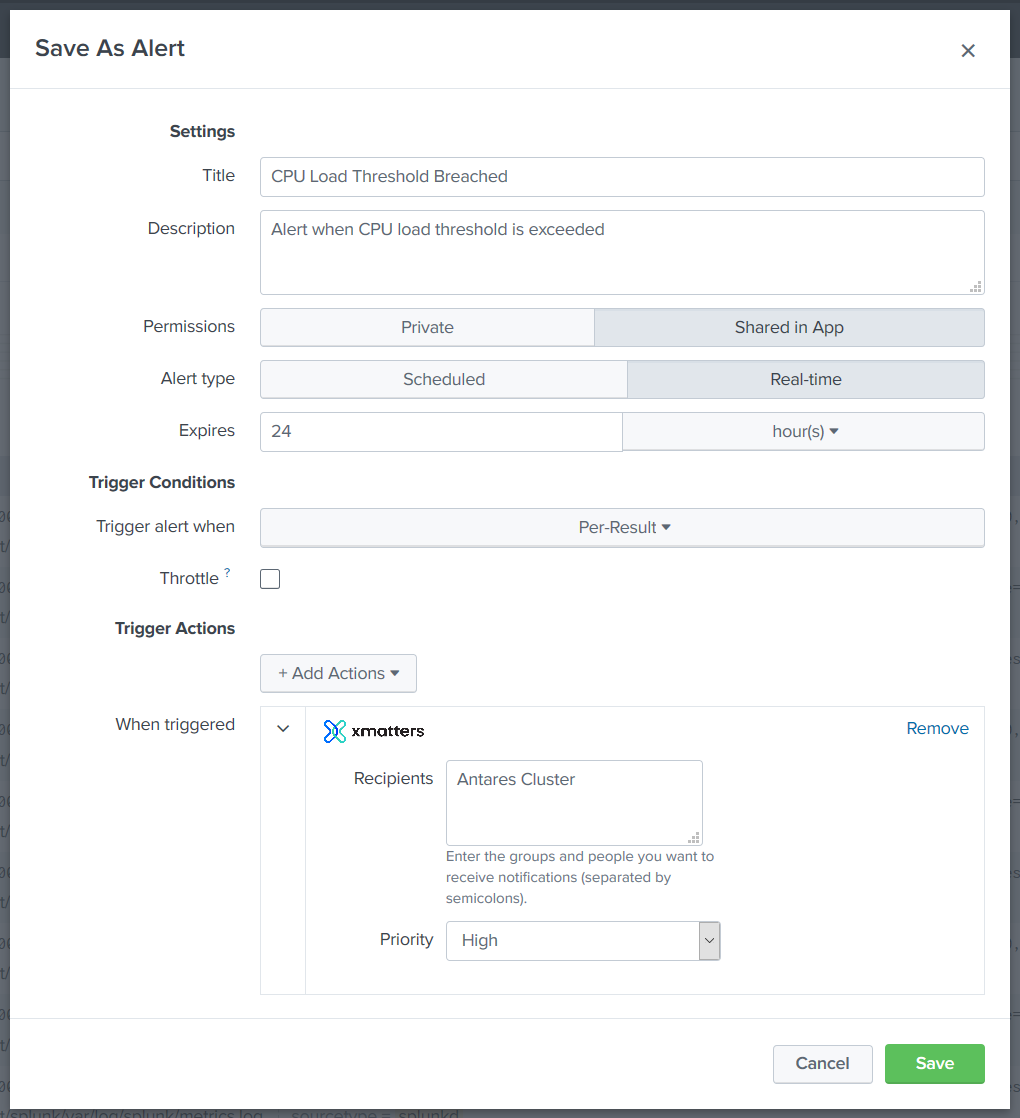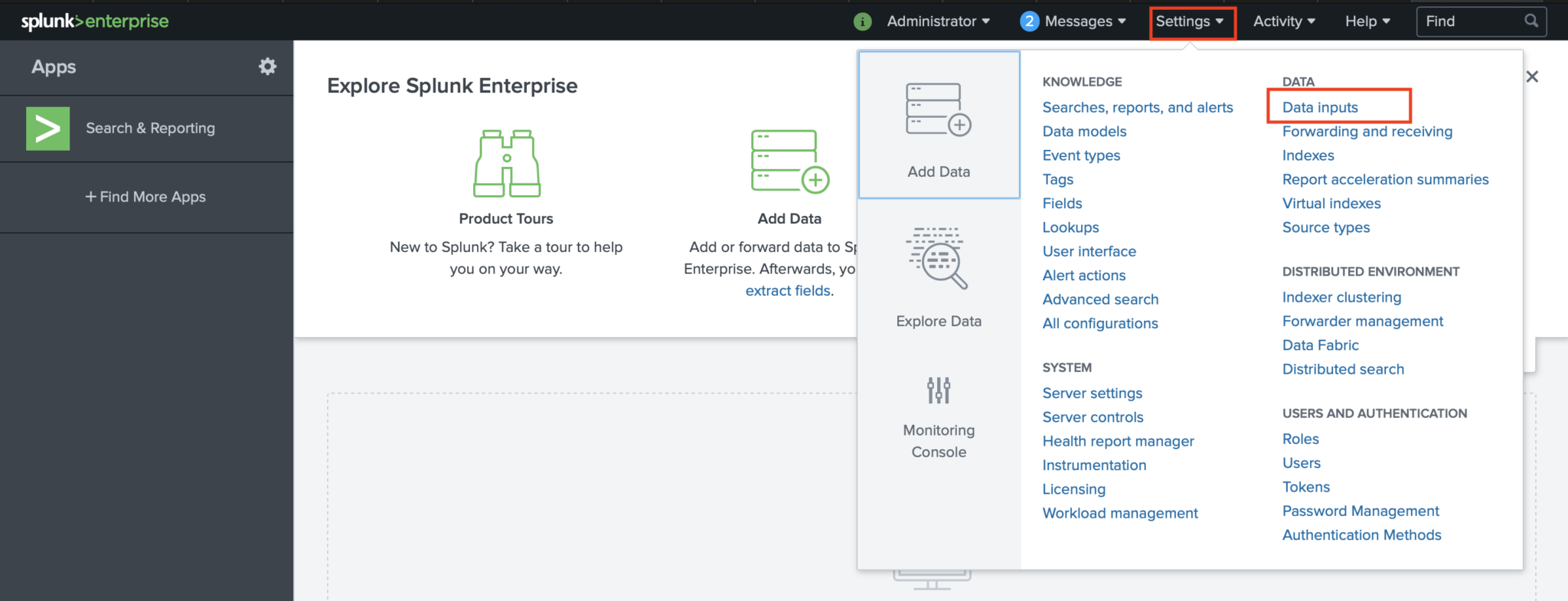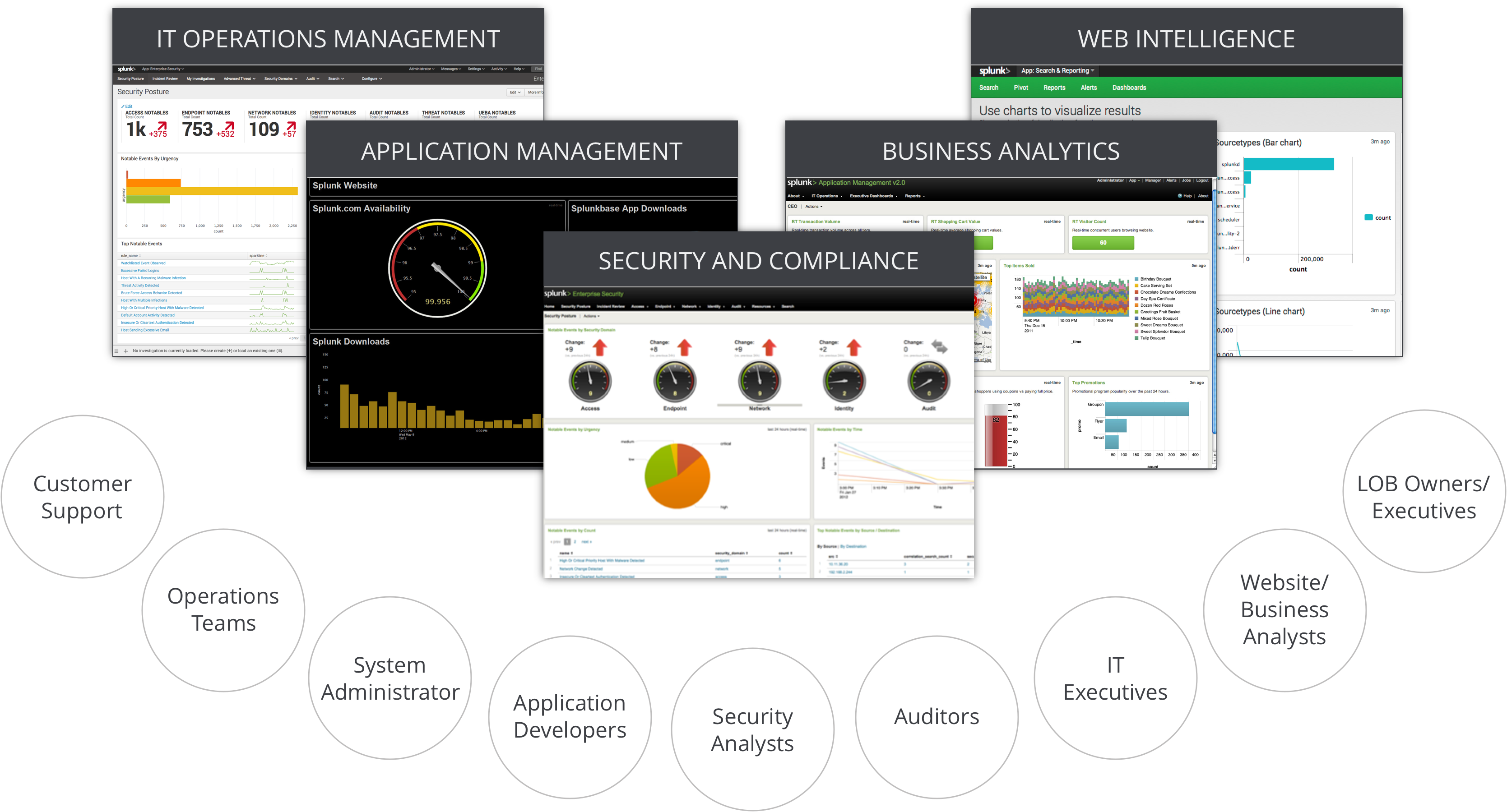

#SPLUNK GROUP BY APP PDF#
the fixed set ("A", "B", "C") assuming that what you wanted is a static enumeration.īut you cannot use $token3$ in equality comparison. Splunk Cloud Services SPL2 Search Reference where command usage Download topic as PDF where command usage The where command is identical to the WHERE clause in the from command.any singular value, or combination of values from |stats count by name, (more efficient than group names into multivalue then mvexpand).So, here I illustrate an example where token3 can be set to any of On the Add new page, fill out the properties of the new app: Option, App. Without knowing how $token3$, $tokSPL$, and $token4$ are being used in the dashboard, it is hard to decipher what the snippet is meant to be. On the Splunk Web home page, click the gear icon next to Apps. | fields - this, no matter how many distinct names you have, selector "All" will include them all. | search Unit="$token1$" noteName="$token2$" | search Unit="$token1$" noteName="$token2$"|stats count by name Included are inputs for performance metrics, event logs.
#SPLUNK GROUP BY APP WINDOWS#
You can monitor, manage, and troubleshoot Windows operating systems, including Active Directory elements, all from one place. Here is a test dashboard to test this idea The Splunk App for Windows Infrastructure provides examples of pre-built data inputs, searches, reports, and dashboards for Windows server and desktop management. The purpose of this guide is to showcase the 2 applications available in Splunkbase to use with Cisco ISE Syslog. To set token3 with dynamic values is quite easy. Can you give an example in which $token4$ is used that cannot be accomplished without? So merging the above searches you can have your list.Can you explain what is the purpose of token4, why you need it in the first place? Based on your match logic, there should a million ways to do whatever you need to do using just token3 (with help from token1 and token2 if they are real user selections). You would need to move /var/log/messages to it's own file inside /etc/nf and then using something like 'create 0640 root newgroup' tell it to create the file properly. var/log/messages is in /etc/logrotate.d/syslog. On the Roles page, select the role to modify (for example. | fields guid, hostname, forwarder_type, version, arch, os, status, last_connected, sum_kb, avg_tcp_kbps_sparkline, avg_tcp_kbps, avg_tcp_eps /etc/logrotate.d/ is the folder for the broken out logrotate scripts. copy link to clipboard Add User Role Access to Indexes From the Splunk menu, click Settings > Roles.

| eval avg_tcp_eps = round(avg_tcp_eps, 2) Groups Collects Group Information (such as group membership, group changes) Apps Collects App Information (such as app name, SSO/provisioning configuration. | eval avg_tcp_kbps = round(avg_tcp_kbps, 2) | eval status = if(isnull(sum_kb) or (sum_kb <= 0) or (last_connected < (info_max_time - 900)), "missing", "active") | stats values(forwarder_type) as forwarder_type, max(version) as version, values(arch) as arch, values(os) as os, max(last_connected) as last_connected, values(new_sum_kb) as sum_kb, values(new_avg_tcp_kbps_sparkline) as avg_tcp_kbps_sparkline, values(new_avg_tcp_kbps) as avg_tcp_kbps, values(new_avg_tcp_eps) as avg_tcp_eps by guid, hostname | inputlookup append=true dmc_forwarder_assets | stats values(fwdType) as forwarder_type, latest(version) as version, values(arch) as arch, values(os) as os, max(_time) as last_connected, sum(kb) as new_sum_kb, sparkline(avg(tcp_KBps), 1m) as new_avg_tcp_kbps_sparkline, avg(tcp_KBps) as new_avg_tcp_kbps, avg(tcp_eps) as new_avg_tcp_eps by guid, hostname It takes data from a lookup that is alimented by the following scheduled search: index=_internal sourcetype=splunkd group=tcpin_connections (connectionType=cooked OR connectionType=cookedSSL) fwdType=* guid=*

| `dmc_time_format(last_connected)` | search NOT | stats dc(guid) as "count" by status
#SPLUNK GROUP BY APP INSTALL#
| `dmc_rename_forwarder_type(forwarder_type)` You can now install the xMatters app from Splunkbase into your Splunk instance and, during installation, paste the provided URL into the Inbound Integration. | eval avg_tcp_eps = if (status = "missing", "N/A", avg_tcp_eps)
You define an output group in nf with the tcpout:| eval avg_tcp_kbps = if (status = "missing", "N/A", avg_tcp_kbps) One or more indexers (receivers) to which you configure a forwarder to send data. | eval avg_tcp_kbps_sparkline = if (status = "missing", "N/A", avg_tcp_kbps_sparkline) | eval sum_kb = if (status = "missing", "N/A", sum_kb) | makemv delim=" " avg_tcp_kbps_sparkline This is the search to have all the Forwarders: | inputlookup dmc_forwarder_assets

It's usually available on not clustered Search Heads or on Master Node. Hi very strange, because MC is a very useful tool to monitor your Splunk infrastructure!


 0 kommentar(er)
0 kommentar(er)
